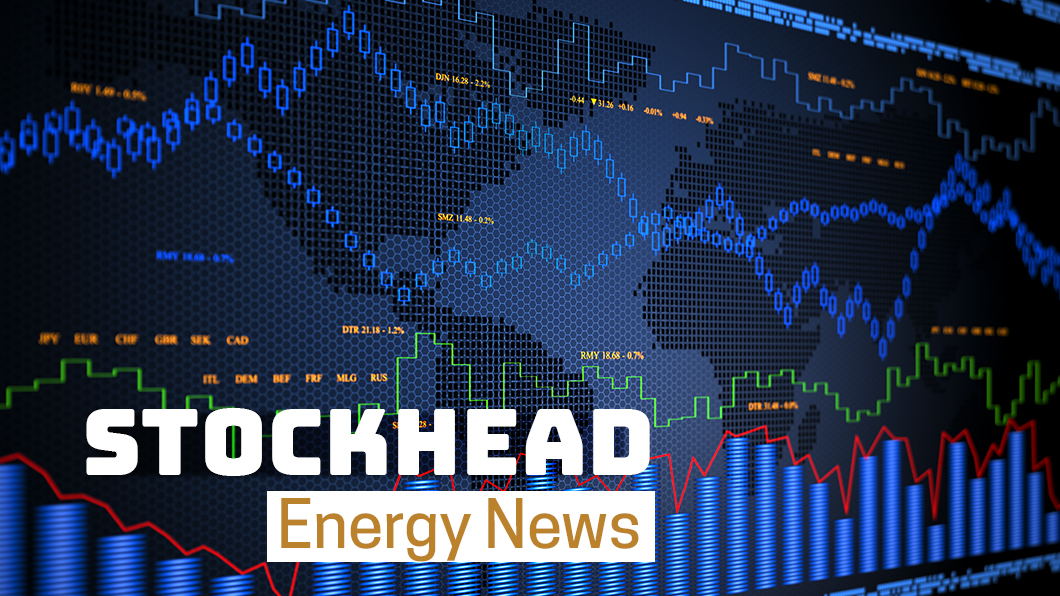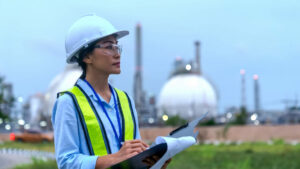Emission Control: A new energy economy is approaching but progress towards net zero remains sluggish

Pic: Vertigo3d / E+ via Getty Images
The International Energy Agency’s (IEO) flagship publication – the World Energy Outlook has emphasised in its latest edition that while a new energy economy is emerging around the world via solar, wind, electric vehicles and low carbon technologies, progress is still miles away from putting global emissions into a steady decline towards net zero.
It says global consumption of coal and oil continues to grow strongly, pushing carbon dioxide emissions towards their second largest annual increase in history this year… at a time when the world is supposed to be scrambling to limit global warming to 1.5 °C.
IEA executive director Fatih Birol said the world’s hugely encouraging clean energy momentum is running up against “the stubborn incumbency of fossil fuels in our energy systems.”
Pivotal moment for energy and the climate
The world is at a pivotal moment for energy and the climate.
Next month, the 26th session of the Conference of the Parties (COP26) is set to take place in Glasgow, United Kingdom for the world’s leader to discuss in a two-week series of conferences about their climate commitments.
The event is meant to reveal the ways in which global leaders are coordinating efforts to combat climate change going forward.
US President Joe Biden, UK Prime Minister Boris Johnson, and foreign Dutch Minister Frans Timmermans have all confirmed their attendance, as have some non-politicians such as Sir David Attenborough, Greta Thunberg and Queen Elizabeth.
But while government leaders play an important role in the movement towards clean energy, “the energy sector too has to be at the heart of solution to climate change” the authors say, especially if the global population is set to grow by some 2 billion people to 2050.
Sharp difference in pledged commitments between countries
In the run-up to COP26 countries have put new commitments on the table – in fact, the report states, more than 50 countries as well as the European Union have pledged to meet net zero emission targets.
“If these are implemented in time and full, they start to bend the global emissions curve down… but achieving these pledges in full and on time cannot be taken for granted.”
The report’s Announced Pledges Scenario (APS) sees a doubling of clean energy investment and financing over the next decade “but this acceleration is not sufficient to cover the inertia of today’s energy system.”
It says: “Over the crucial period to 2030, the actions in this scenario fall well short of the emissions reductions that would be required to keep the door open to a net zero emissions by 2050 trajectory.
“One of the key reasons for this shortfall is that today’s climate commitments, as reflected in the APS, reveal sharp divergences between countries in the pledged speeds of their energy transitions.”
Four key priorities for action to close the gap over the next decade and to prepare the ground for further rapid emissions reduction beyond 2030, the report says, are to:
- Deliver a surge in clean electrification;
- Realise the full potential of energy efficiency;
- Prevent methane leaks from fossil fuel operations; and
- Boost clean energy innovation.
Reducing methane emissions
In the IEA’s Curtailing Methane Emissions from Fossil Fuel Operations report the pathways to achieving a 75% cut in methane emissions by 2030 are outlined.
Currently, methane is responsible for around 30% of the global rise in temperatures to date.
Solid effort to decrease methane emissions from the coal and oil and gas sectors will have immediate effects “because of the potent effect of methane on global warming and the large scope for cost effective actions.”
According to the report, close to 120 million tonnes of methane was emitted globally in 2020, with much of these being leakages along the production and supply chain that operators fail to capture or avert.
Ahead of the COP 26, the European Union and the United States announced the Global Methane Pledge back in September – an initiative to reduce global methane emissions by at least 30% from 2020 levels by 2030, in a move towards using best available inventory methodologies to quantify methane emissions.
The report goes on to say that in the context of energy-related CO2 emissions, countries with net zero pledges are responsible for well over 60% of global emissions.
And the picture for methane is quite different: the committed countries are responsible for only about 40% of emissions from fossil fuel operations.
It is therefore critical, it says, for this coalition to expand its reach through greater collaboration, encouragement, incentives and information-sharing initiatives.
BHP to reduce emission position to zero by 2025
BHP is expecting to enter renewable energy supply arrangements to enable Olympic Dam to reduce its emission position to zero for 50% of its electricity consumption by 2025.
The arrangements will be supplied by Iberdrola, including from the Port Augusta Renewable Energy Park in South Australia, which will be Australia’s largest solar-wind hybrid plant once in operation in July 2022.
Renewable energy supply arrangements will include a retail agreement with Origin Energy, who will facilitate the arrangements.
This move follows BHP’s entry into renewable energy agreements for its operations in Western Australia in 2021, Queensland in 2020 and Chile in 2019.
These arrangements, which are intended to begin on July 1, 2022, are one of the actions BHP is taking to contribute to its medium-term target to reduce operational greenhouse gas emissions (scopes 1 and 2) from its operated assets by at least 30% from FY2020 levels by FY2030.
ASX green energy stocks
| CODE | COMPANY | PRICE | 1 DAY RETURN% | 1 WEEK RETURN % | 6 MONTH RETURN% | 1 YEAR RETURN% | MARKET CAP |
|---|---|---|---|---|---|---|---|
| AST | AusNet Services Ltd | 2.475 | 0.2% | -1.8% | 25.6% | 24.1% | $9,460,012,280 |
| AVL | Aust Vanadium Ltd | 0.024 | 4.3% | 9.1% | 9.1% | 100.0% | $75,458,986 |
| BSX | Blackstone Ltd | 0.515 | 1.0% | 14.4% | -9.6% | 6.2% | $174,130,417 |
| DEL | Delorean Corporation | 0.2 | 5.3% | 2.6% | -4.8% | 0.0% | $34,024,873 |
| ECT | Env Clean Tech Ltd. | 0.016 | 6.7% | 33.3% | 60.0% | 60.0% | $18,676,883 |
| FMG | Fortescue Metals Grp | 14.38 | 2.7% | 1.4% | -21.9% | -13.5% | $43,105,508,852 |
| GEV | Global Ene Ven Ltd | 0.115 | 9.5% | 42.0% | 35.3% | 113.0% | $48,002,836 |
| GNX | Genex Power Ltd | 0.225 | 2.3% | 2.3% | 2.3% | 31.1% | $235,378,010 |
| HXG | Hexagon Energy | 0.081 | 2.5% | 5.2% | 5.2% | 84.1% | $35,235,092 |
| HZR | Hazer Group Limited | 1.365 | -1.1% | 44.4% | 39.3% | 92.3% | $221,562,028 |
| IFT | Infratil Limited | 7.91 | 0.1% | -1.1% | 4.9% | 63.1% | $5,720,732,275 |
| IRD | Iron Road Ltd | 0.23 | 2.2% | 31.4% | 9.5% | 28.8% | $178,782,816 |
| LIO | Lion Energy Limited | 0.054 | 14.9% | 35.0% | 25.6% | 217.6% | $14,314,936 |
| MEZ | Meridian Energy | 4.72 | -1.7% | -0.4% | -5.4% | -10.8% | $6,021,733,363 |
| MPR | Mpower Group Limited | 0.062 | -4.6% | -8.8% | 5.1% | 106.7% | $14,212,896 |
| NEW | NEW Energy Solar | 0.805 | 0.0% | 0.0% | -3.0% | 4.5% | $287,721,813 |
| PGY | Pilot Energy Ltd | 0.055 | -1.8% | 3.8% | -8.3% | 71.9% | $28,089,695 |
| PH2 | Pure Hydrogen Corp | 0.275 | 3.8% | 27.9% | 34.1% | 323.1% | $83,177,104 |
| PRL | Province Resources | 0.16 | 3.2% | 10.3% | 3.2% | 1293.4% | $175,097,271 |
| PRM | Prominence Energy | 0.018 | -5.3% | 28.6% | 50.0% | 260.0% | $18,889,520 |
| QEM | QEM Limited | 0.16 | 0.0% | 6.7% | 0.0% | 45.5% | $18,147,733 |
| RFX | Redflow Limited | 0.061 | 1.7% | 0.0% | -1.6% | 112.4% | $83,817,023 |
| SKI | Spark Infrastructure | 2.83 | 0.4% | 0.7% | 0.4% | 32.9% | $4,948,971,070 |
| VUL | Vulcan Energy | 11.56 | 0.0% | 6.1% | -27.3% | 896.6% | $1,428,887,429 |
Lion Energy (ASX:LIO) is up 14.9% today with shares sitting at 5.4 cents.
The company is positioning itself to be an early mover in green hydrogen production in Australia with the release of a hydrogen roadmap earlier this month.
Following extensive and ongoing market analysis and interaction with market participants and public departments, Lion is focusing its initial efforts on the production and delivery of green hydrogen for the domestic heavy mobility market.
UNLOCK INSIGHTS
Discover the untold stories of emerging ASX stocks.
Daily news and expert analysis, it's free to subscribe.
By proceeding, you confirm you understand that we handle personal information in accordance with our Privacy Policy.








